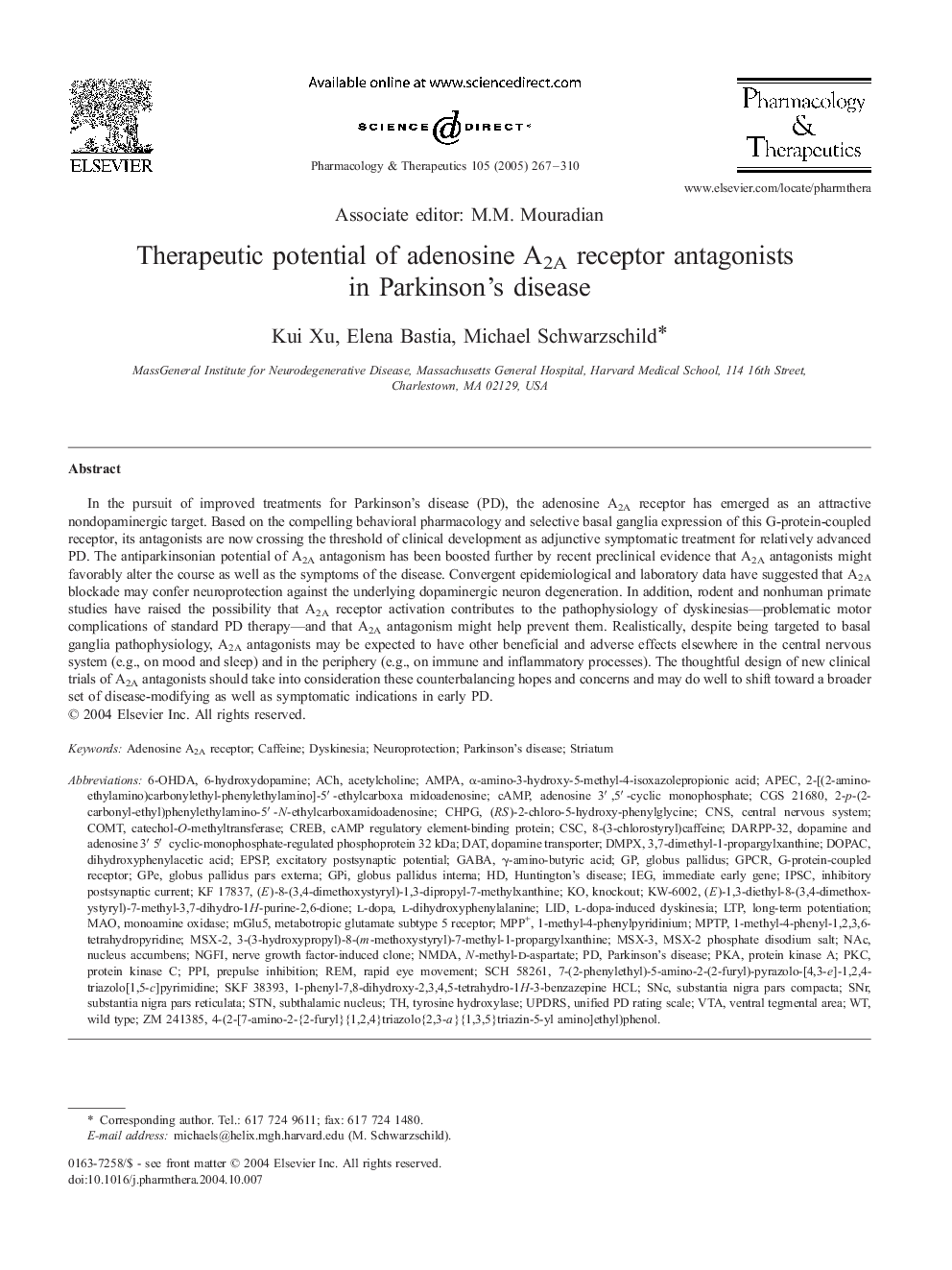| Article ID | Journal | Published Year | Pages | File Type |
|---|---|---|---|---|
| 9016113 | Pharmacology & Therapeutics | 2005 | 44 Pages |
Abstract
In the pursuit of improved treatments for Parkinson's disease (PD), the adenosine A2A receptor has emerged as an attractive nondopaminergic target. Based on the compelling behavioral pharmacology and selective basal ganglia expression of this G-protein-coupled receptor, its antagonists are now crossing the threshold of clinical development as adjunctive symptomatic treatment for relatively advanced PD. The antiparkinsonian potential of A2A antagonism has been boosted further by recent preclinical evidence that A2A antagonists might favorably alter the course as well as the symptoms of the disease. Convergent epidemiological and laboratory data have suggested that A2A blockade may confer neuroprotection against the underlying dopaminergic neuron degeneration. In addition, rodent and nonhuman primate studies have raised the possibility that A2A receptor activation contributes to the pathophysiology of dyskinesias-problematic motor complications of standard PD therapy-and that A2A antagonism might help prevent them. Realistically, despite being targeted to basal ganglia pathophysiology, A2A antagonists may be expected to have other beneficial and adverse effects elsewhere in the central nervous system (e.g., on mood and sleep) and in the periphery (e.g., on immune and inflammatory processes). The thoughtful design of new clinical trials of A2A antagonists should take into consideration these counterbalancing hopes and concerns and may do well to shift toward a broader set of disease-modifying as well as symptomatic indications in early PD.
Keywords
IPSCDARPP-32Substantia nigra pars reticulataMPTPNMDAN-methyl-d-aspartateGPCRCOMTVTADOPACREMSTN1-methyl-4-phenylpyridiniumMAOPKCCSCGPiUPDRSIEGCHPGSKF 38393Mglu5globus pallidus pars externaDMPXAPECCGS 21680KW-6002ZM 241385SCH 58261Msx-2NACPPICREB6-HydroxydopamineLIDCatechol-O-methyltransferasepKaAMPA6-OHDASNCSNRDATGPE1-methyl-4-phenyl-1,2,3,6-tetrahydropyridine3,7-dimethyl-1-propargylxanthine8-(3-chlorostyryl)caffeinecAMPEPSPG-protein-coupled receptorl-DOPAl-dihydroxyphenylalanineMPP+γ-amino-butyric acidadenosine 3′,5′-cyclic monophosphateAChStriatumAcetylcholineα-amino-3-hydroxy-5-methyl-4-isoxazolepropionic acidDopamine transporterglobus pallidus internaHuntington's diseaseParkinson's diseaselong-term potentiationLTPsubstantia nigra pars compactatyrosine hydroxylaseinhibitory postsynaptic currentrapid eye movementCNSdihydroxyphenylacetic aciddyskinesiaL-DOPA-induced dyskinesiacentral nervous systemNeuroprotectionPrepulse inhibitionmonoamine oxidaseventral tegmental areaknockoutwild typeNucleus accumbensSubthalamic nucleusexcitatory postsynaptic potentialprotein kinase AProtein kinase Cimmediate early geneCaffeineGABAGlobus pallidusAdenosine A2A receptor
Related Topics
Health Sciences
Pharmacology, Toxicology and Pharmaceutical Science
Pharmacology
Authors
Kui Xu, Elena Bastia, Michael Schwarzschild,
